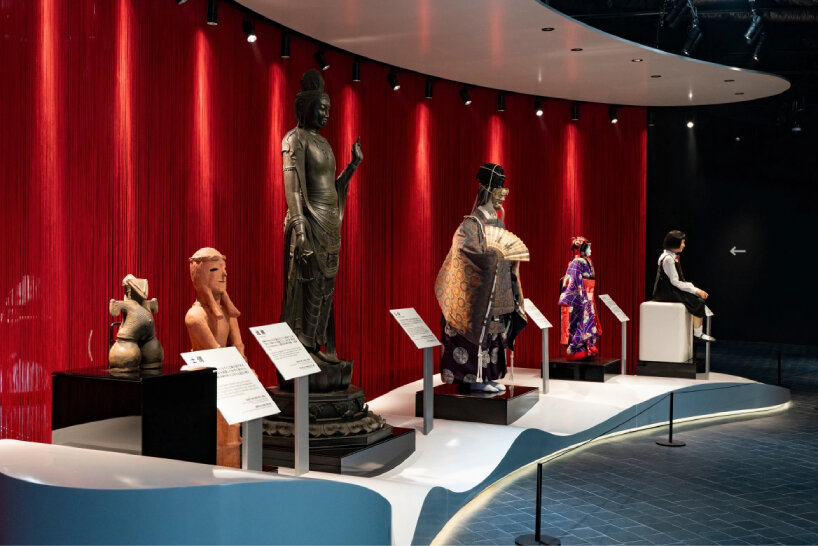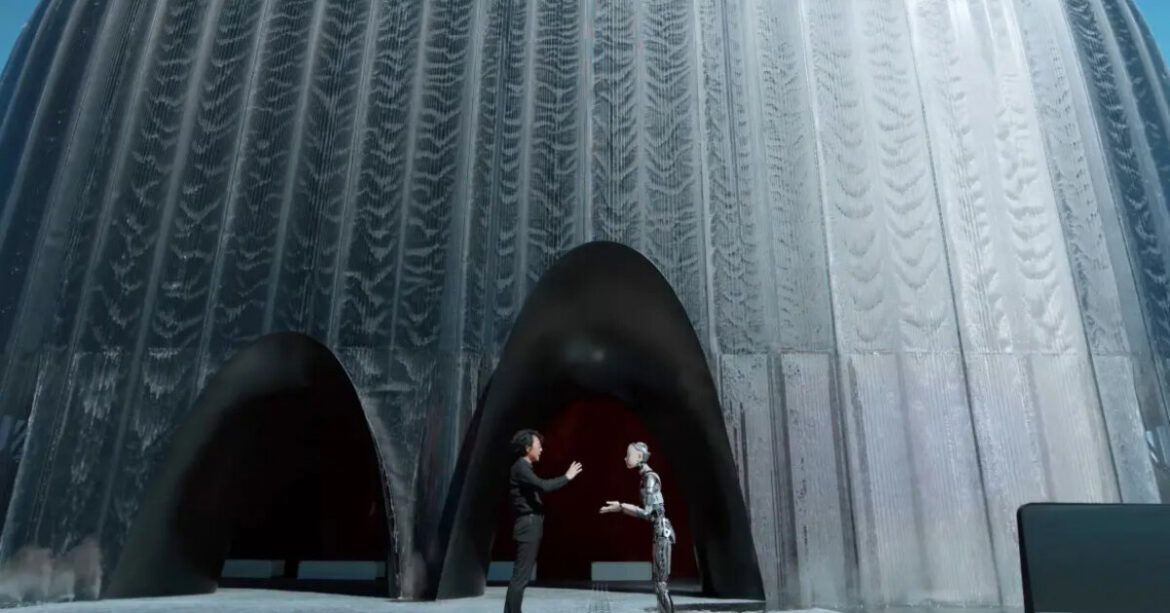future of life imagines technological co-evolution
At Expo 2025 Osaka, the Future of Life pavilion offers a speculative journey into a world shaped by technological co-evolution. One of Japan’s leading roboticists, Hiroshi Ishiguro, leads the design of this Signature Pavilion — one of eight anchoring the Expo’s thematic core — which through its architecture, interactive environments, and narrative zones, presents a layered, unbound vision of human potential.
The design is rooted in the symbolism of water and shoreline, as threshold spaces where solid, liquid, and vapor meet. These motifs carry through spatially. As the pavilion’s architecture rises from the ground like a sculpted mass, its exterior is animated by a water surface that shimmers and flows across its skin. This continuous presence of water becomes both material and metaphor: a connector between organic life and future synthetic forms. Visitors enter through this membrane-like facade into a sequence of three thematic areas, each imagining a different horizon for life on Earth and beyond shaped by robotic and AI technologies.

all images courtesy of Expo 2025 Osaka
Hiroshi Ishiguro completes the signature pavilion
Hiroshi Ishiguro has worked together with a multidisciplinary team, including architects, technologists, and cultural researchers, to imagine the shape of life 50 years or even a millennium in the future. Stepping into the first zone of the Future of Life pavilion, titled Journey of Life, the exhibition traces Japan’s historical tendency to imbue objects with spirit and agency, from ancient haniwa clay figures to contemporary robotics. This continuity offers a cultural frame for understanding how lifelike technologies have long held meaning in Japanese life, and positions the emergence of androids as an evolution rather than rupture.
Zone 2, The Future of 2075, envisions a near-future scenario where human and machine cohabitation is commonplace. Here, through immersive storytelling and projected environments, speculative products and everyday rituals envision a world 50 years ahead. Rather than presenting a utopia or dystopia, the pavilion stages these projections as lived realities open to interpretation, reflection, and critique.

the design is rooted in the symbolism of water and shoreline
In the final gallery, Mahoroba, architecture and installation converge to evoke a more distant and ambiguous future. Set in a sound-and-light-filled space that suggests a post-physical world, this section imagines what life might look like 1,000 years from now, when humanity has evolved beyond its biological form. Instead of focusing on technological hardware, the installation gestures toward an abstracted sensory environment to suggest that consciousness, rather than corporeality, may be the foundation of life to come.
Threaded throughout the pavilion is The Changing Waters AR experience. Developed in tandem with a responsive lighting installation, it allows visitors to interact with a basin of water through digital overlays. Real-time sensors capture subtle changes in water quality — triggered by the addition of small elements like seashells or salt — and translate them into shifting light patterns across the pavilion’s surface. This feedback loop between body, environment, and architecture reinforces the pavilion’s central theme: that life is fluid, adaptable, and interdependent with its surroundings.

Future of Life pavilion offers a speculative journey into a world shaped by technological co-evolution

led by Hiroshi Ishiguro, one of Japan’s leading roboticists

a sequence of three thematic areas, each imagining a different horizon for life on Earth and beyond

reimagining human existence through robotics and AI

the first zone traces Japan’s historical tendency to imbue objects with spirit and agency

Pangie the robot is akin to an angel that encourages new communication

Petra is a robot that will be a tool that coexists with future humanity

MOMO, an evolved millennium human, is a a symbol of eternal youth, longevity and many descendants
project info:
name: Future of Life pavilion
architect: Hiroshi Ishiguro
location: Osaka, Japan
event: Expo 2025 Osaka | @expo2025japan
dates: April 13th — October 13th, 2025


AloJapan.com